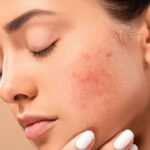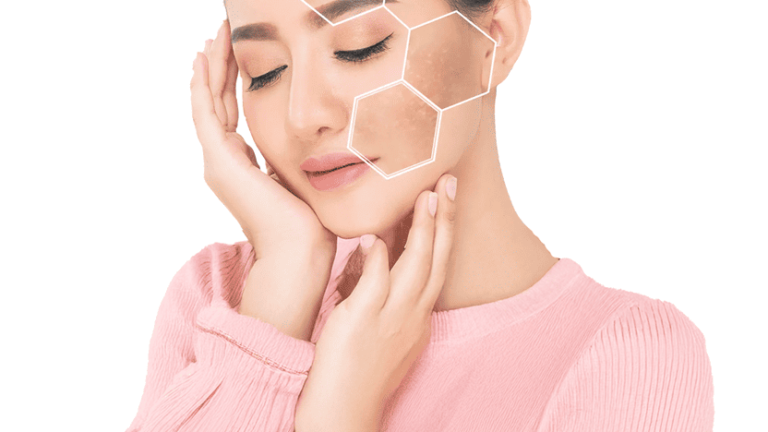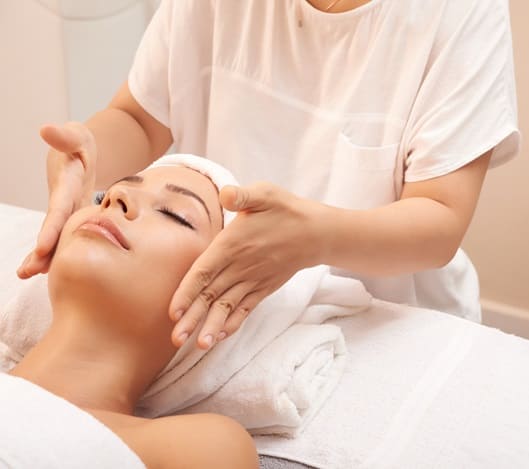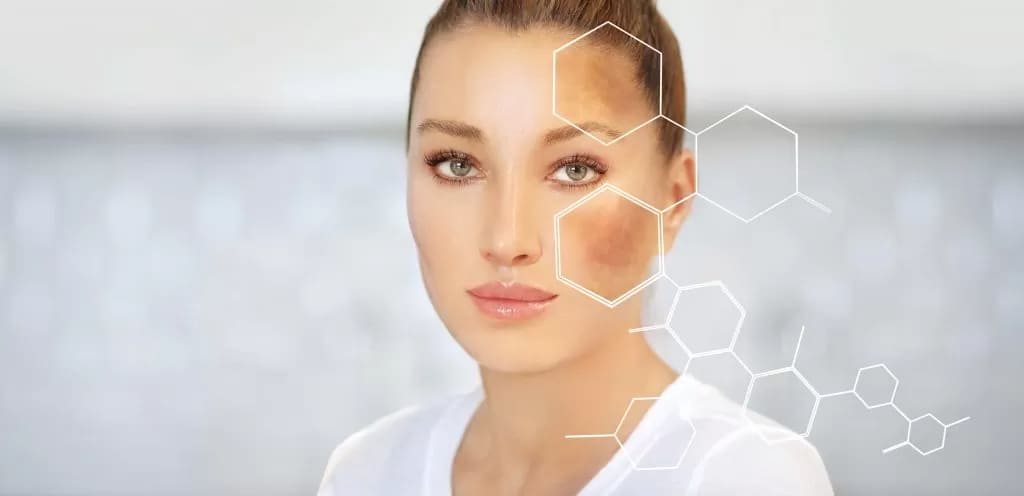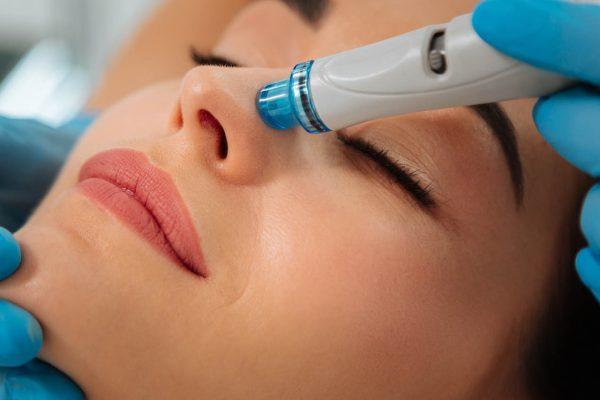Achieving an even and radiant complexion is a common goal in skincare, BUT pigmentation issues can often stand in the way. Dark spots, melasma, post-inflammatory hyperpigmentation, and uneven skin tone are common concerns that affect people of all ages and skin types. Choosing the right pigmentation treatment is crucial, as skin reactions vary based on skin type, the underlying cause of pigmentation, and individual skin goals. Here, we’ll explore various treatment options for pigmentation and how to choose the best approach to restore a healthy, glowing complexion.
Understanding Pigmentation and Its Causes
Pigmentation refers to the darkening of the skin. When the body produces excess melanin( the pigment responsible for skin color) it can lead to dark spots or uneven patches. The main types of pigmentation issues include:
- Melasma: Brown or gray patches that appear on the face, often due to hormonal changes.
- Post-Inflammatory Hyperpigmentation (PIH): Dark spots or patches that follow an injury or skin inflammation (like acne).
- Sunspots (Solar Lentigines): Caused by prolonged sun exposure, these appear as small, dark spots, especially on sun-exposed areas.
- Freckles: Small, brown spots that are primarily genetic but can be intensified by sun exposure.
Key Considerations before Choosing Pigmentation Treatments
When selecting a pigmentation treatment, it’s essential to consider:
1. Skin Type: Some treatments, like laser therapy, may cause hyperpigmentation in darker skin tones.
2. Type of Pigmentation: Different treatments are effective for specific types of pigmentation.
3. Lifestyle: Treatments like chemical peels may require downtime and strict sun protection.
Best Treatments for Pigmentation and Getting Glowing Skin
1. Topical Treatments
Topical products can be effective for mild pigmentation, gradually fading dark spots and evening out skin tone.
• Hydroquinone : Known as a “gold standard” for skin lightening, hydroquinone works by reducing melanin production in targeted areas. It’s effective for melasma and dark spots but should be used under professional guidance, as overuse can lead to skin irritation& hyperpigmentation.
• Retinoids : These Vitamin A derivatives boost cell turnover, helping to remove pigmented skin cells and encourage new, even-toned cells. They’re particularly effective for sunspots and can also help with anti-aging by smoothing fine lines.
• Vitamin C : This antioxidant powerhouse brightens the skin, reduces dark spots, and helps protect from UV damage. It works well as a part of daily skincare and can complement other treatments like chemical peels.
• Azelaic Acid : An effective option for sensitive and acne-prone skin, azelaic acid helps reduce pigmentation from acne scars and provides mild exfoliation, leading to a smoother, more even skin tone.
•There are various other depigmenting agents like kojic acid, arbutin, Niacinamide, tranexamic acid etc. which are usually used in combination depending on thr type and severity of pigmentation
2. Chemical Peels
Chemical peels exfoliate the top layer of skin, encouraging cell turnover and reducing pigmentation. The type and strength of the peel depend on the pigmentation’s depth.
• Superficial Peels: These mild peels, containing ingredients like glycolic acid or salicylic acid, gently exfoliate and brighten the skin. They are ideal for those with mild pigmentation and can often be incorporated into regular skincare routines.
• Medium Peels: These penetrate deeper, using agents like Trichloroacetic acid (TCA) to address more stubborn pigmentation. Medium peels are effective for sunspots and Melasma but require some downtime.
• Deep Peels: Reserved for severe pigmentation issues, deep peels require professional supervision and involve a longer recovery period. They’re usually recommended for individuals with significant sun damage or deeply embedded pigmentation.
Chemical peels can significantly improve skin tone but require caution, especially for darker skin tones, as they can sometimes cause post-inflammatory hyperpigmentation.
3. Laser Treatments
Laser therapies target pigmentation at various depths within the skin and are effective for persistent or deeper pigmentation issues.
Q-Switched Laser: This laser type is highly effective for treating melasma and sunspots by breaking down melanin in pigmented cells, allowing the body to remove them naturally.
Fractional Laser: Designed to treat both pigmentation and texture, fractional lasers deliver controlled micro-injuries to the skin, stimulating collagen production and improving pigmentation. Fractional lasers can be highly effective but require a few days of downtime.
IPL (Intense Pulsed Light): Also known as a photofacial, IPL is a versatile treatment that can reduce pigmentation, redness, and improve overall skin tone. IPL is generally best for lighter skin tones and should be avoided by those with darker complexions due to the risk of hyperpigmentation.
4. Microdermabrasion and Dermabrasion
These physical exfoliation techniques target the outer layer of skin, reducing pigmentation and improving texture.
Microdermabrasion: This gentle exfoliation treatment removes dead skin cells, revealing brighter skin and gradually reducing pigmentation. It’s effective for mild pigmentation and has no downtime.
Dermabrasion: A more intensive exfoliation, dermabrasion removes the top layers of skin, targeting more severe pigmentation. It requires downtime and is best suited for those with lighter skin tones.
5. Microneedling
Microneedling involves tiny needles that create micro-injuries in the skin, promoting collagen production and cell turnover. This procedure can reduce pigmentation and is often combined with topical treatments like Vitamin C or growth factors to maximize results. Microneedling is effective for various skin tones and can also help with scarring and fine lines so helps in overall rejuvenation of the skin.
6. Cryotherapy
Cryotherapy, or cryosurgery, involves freezing pigmented spots with liquid nitrogen, causing them to flake off as the skin heals. This quick procedure is effective for isolated spots like sunspots but may not be suitable for widespread pigmentation.
Home Remedies and Lifestyle Adjustments for Pigmentation
In addition to professional treatments, home care and lifestyle play essential roles in managing pigmentation:
1. Sunscreen: UV exposure exacerbates pigmentation, so daily broad-spectrum sunscreen (SPF 30 or higher) is crucial.
2. Antioxidant-Rich Diet: Vitamins C and E, both potent antioxidants, can help protect skin from damage and brighten the complexion.
3. Proper Moisturization: Keeping skin hydrated supports barrier function and aids the healing process.
4. Avoid Picking at Skin: Picking or squeezing pimples can lead to post-inflammatory hyperpigmentation.
Choosing the Right Treatment for Your Skin
1. Consult a Dermatologist : Professional guidance can help determine the cause of pigmentation and the best-suited treatment.
2. Start Conservatively: Topical treatments and mild peels are good starting points, especially for sensitive skin.
3. Consider Combination Treatments: Many professionals recommend combining treatments like peels with topical treatments for enhanced results.
4. Factor in Recovery Time: Some treatments, like lasers or medium peels, require downtime. If you have a busy lifestyle, opt for lower-downtime treatments like superficial peels or IPL.
With advancements in skin care and dermatology, there are now more options than ever for addressing pigmentation issues. From gentle topicals to advanced lasers, choosing the best pigmentation treatment depends on factors like your skin type, the pigmentation’s depth, and your lifestyle. Consulting with a Dermatologist can help you navigate the best approach, ensuring you enjoy a brighter, more even-toned complexion safely. Remember, consistency in sun protection and dedicated skin care routine is key to maintaining healthy, glowing skin long-term.
Consult FMS Skin and Hair Clinic, Best Cosmetic Skin Clinic in Hyderabad, for all Advanced Skin and Hair Treatments.
For Appointment Booking. Please call us or WhatsApp at 8885060760 Or Email Us at [email protected]

Author: Dr.Gowthami


